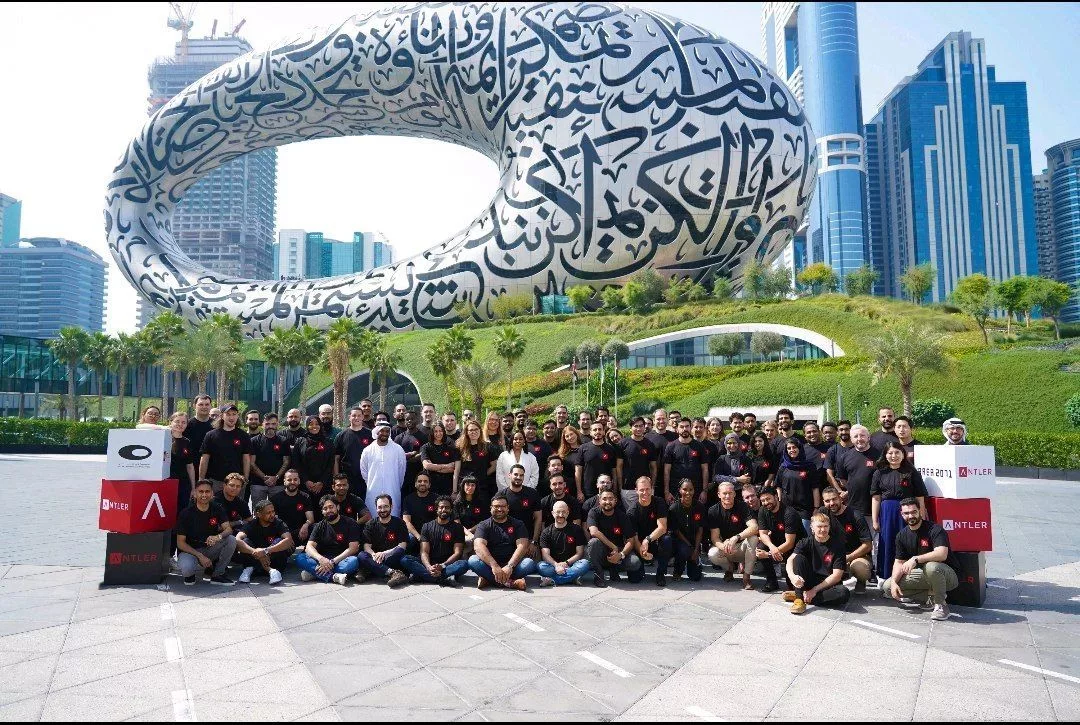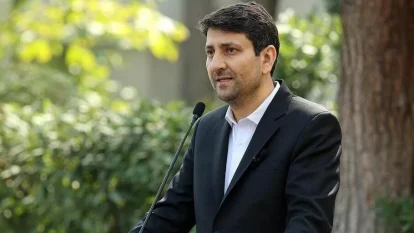
Iran at a Crossroads: Redefine Its Global Role or Face Isolation, Warns Economist
With the rise of artificial intelligence and emerging technologies, the digital divide between advanced and developing nations has deepened.
Economic researcher Rasoul Ghanbari warns in an interview with Digiato that Iran faces a pivotal choice: either redefine its role in the new global division of labor or risk falling into the same fate as countries like Afghanistan and North Korea. With the rise of artificial intelligence and emerging technologies, the digital divide between advanced and developing nations has deepened. While countries like the U.S. and the Western bloc control the infrastructure of this transformation, Iran has remained a mere exporter of raw materials and energy for years.
Given the policies adopted by other nations, it’s not unlikely that within 10-15 years, Iran’s oil and gas may no longer find buyers. Meanwhile, regional players like the UAE and Saudi Arabia have already begun planning for a post-oil future—but what about Iran?
The division of labor in the global economy is a phenomenon with deep historical roots. In 1750, François Quesnay, a physician in the French court, and Adam Smith famously illustrated the concept using the example of a pin factory. Smith argued that if a single worker performed every step of pin production from morning to night, they might produce only 20 pins a day. But with labor divided—where each worker specializes in one part of the process—a team could collectively manufacture up to 4,000 pins daily.
The Intellectual Monopoly That Will Never Be Broken
In the age of artificial intelligence and advanced technologies, monopolies have taken on more intricate and insidious forms. According to economist Ghanbari, the global division of labor has undergone a profound shift:
"Since the 1990s and the advent of the internet, not only has it become possible to ship physical goods across the world, but even services can now be exported. For instance, an Iranian freelancer can take on a project from Australia through online platforms and get paid for it."
Yet Ghanbari warns that in today’s digital economy, those who control the infrastructure wield power over those who do not. He points to the United States, China, and key players in the Western bloc—such as Japan, South Korea, and Western European nations—as the dominant gatekeepers of what he calls “platform capitalism.” These countries possess the critical infrastructure that has fueled a widening digital divide between them and the rest of the world. Entry into this exclusive club, he says, demands astronomical investments—so high, in fact, that even if all the remaining countries pooled their resources, they still couldn’t catch up.
Ghanbari calls this structure an "intellectual and pioneer’s rent"—a kind of monopoly born not just from capital, but from ideas and innovation. He illustrates this through the example of Apple products: while an iPhone may cost just $200 to manufacture in China—including labor, factory overhead, and taxes paid to the Chinese government—it retails globally for $1,000 to $1,500. The hefty margin doesn’t go to the workers or factories, but to Apple and, by extension, the U.S. economy. Why? Because the software, design, and proprietary infrastructure are all controlled by American firms.
This arrangement ensures that developing nations remain stuck in the role of producers—assembling goods based on intellectual property they don't own—instead of evolving into economic powerhouses themselves. It’s a global labor system deeply embedded in the digital and AI-driven fabric of the modern world.
And for some countries, the situation is even grimmer. Ghanbari cites Ethiopia, which has become a dumping ground for electronic waste. There, old gadgets from richer nations are shipped for recycling—a process that exposes local communities to toxic substances and wreaks havoc on the environment.
Iran’s Place in the Global Division of Labor
According to economist Ghanbari, Iran has played various roles in the global division of labor throughout history—shifting from exporter of silk and carpets during the Safavid era, to an importer of goods and even ideas, such as Western intellectual movements in the late Qajar period.
"After the land reforms," he explains, "Iran transformed into an energy exporter and technology importer—with the hope that one day it would become a technology exporter. In the 1960s, economic planning was put into motion, and for a time it made promising progress. But due to the nature of the Pahlavi regime, the process faltered, eventually culminating in the revolution and the war with Iraq. From then on, Iran has been primarily an exporter of energy."
Ghanbari views this period as a missed opportunity for Iran—one that was costly, yet full of potential:
"It gave Iran an expensive window of opportunity to reverse-engineer certain technologies in oil, gas, and defense. But if you consider the opportunity cost, it becomes clear that with better engagement with the world, our situation might have been far better. Of course, that’s speculation—but not unfounded."
A Stark Warning: Iran at Risk of Disappearing from the Global Economic Map
Today, Ghanbari argues, Iran has been reduced to exporting raw materials and semi-processed goods—its role in global trade becoming increasingly peripheral.
In a sobering assessment, he warns:
"It’s not far-fetched to imagine that new mineral reserves will be discovered elsewhere, or that chemical laboratories will soon be able to synthesize raw materials artificially."
He points to energy policy shifts in Europe to underscore his point:
"Over the next decade, with EU countries legally required to source at least half their energy from renewables by 2035, it’s entirely possible that in 10 to 15 years, there will be little to no demand for our oil and gas."
To reinforce his prediction, Ghanbari draws attention to what neighboring countries are doing:
"The UAE, for example, is working to position itself as a hub for tourism and venture capital. Saudi Arabia is following a similar path."
The implication is clear: while others pivot toward the future, Iran risks being left behind—locked in a role that may soon be obsolete.
If No One Buys Our Oil, What Then?

Ghanbari stresses a hard truth: if the world stops buying Iran’s oil and gas, the country must renegotiate its position in the global division of labor. But such a negotiation is only possible if Iran offers something in which it holds a comparative or absolute advantage. Without that, he warns, “we risk disappearing from the map.”
This, he clarifies, doesn't mean annihilation by bombs—it means economic invisibility. “We’d simply no longer matter to the global system. Our presence or absence would be irrelevant.” A fate, he notes, that has already befallen nations like Afghanistan and North Korea.
Competitive Advantage: The Key to Survival in the Global Economy
Ghanbari argues that the nations most at risk of being pushed out of the global economy are those that fail to keep pace with technological change and fail to secure a place in the global value chain.
He gives a striking example: Bangladesh. Despite facing geographic and political challenges, it has carved out a vital niche in the global garment industry.
"If you decided today to stop buying from Bangladesh," he says, "you’d probably run into a global shortage of underwear within months."
That’s because Bangladesh has positioned itself in such a way that economic disengagement is no longer an option—at least until a strong competitor emerges.
Ghanbari explains that building a comparative advantage doesn’t mean putting all your eggs in one basket. Rather, it should be a launchpad for expanding further—either by deepening the value chain within that same sector or by branching into new industries.
He points to South Korea as a model: first dominating the auto industry, then expanding into electronics and film. Turkey, too, initially built up its tourism industry, followed by clothing and household appliances, and is now entering car manufacturing and tech startups.
“Iran needs to define a clear competitive edge—and invest in it.”
Diplomacy and Development Must Go Hand in Hand
For Iran to participate meaningfully in the global division of labor, Ghanbari believes it must improve its relationships with key countries. Cooperation between the government and the private sector is crucial—but he insists the state's role is especially vital.
"The government’s job," he says, "is to achieve diplomatic stability in the region so it can help market Iranian products and services." He acknowledges that opening up to China is a positive step, but emphasizes the importance of specificity:
"We need to know exactly what we’re offering—and what we expect in return."
In a sharp critique of recent foreign policy, Ghanbari points out that despite significant diplomatic investments in Iraq, the payoff has been minimal: "We’ve spent a major portion of our diplomatic capital in Iraq, yet Iran doesn’t even rank among Iraq’s top ten trade partners. Meanwhile, Turkey—with far less effort—has managed to secure a spot in the top three."
Scattered Data: The Achilles’ Heel of Iran’s AI Ambitions
Economic researcher Ghanbari stresses the need for realistic and accessible strategic goals: "You can’t just say Iran will become an AI powerhouse in 10 years—that’s simply not feasible. But we can aim to become a commercial platform hub for the Middle East. That’s a goal within reach—but it requires a rebranding of our diplomatic identity and leaders who are aligned with this vision."
In response to Digiato’s question about performative gestures by officials in the field of AI—like the publication of Iran’s National AI Roadmap—Ghanbari points to a chronic, systemic flaw: the failure to implement high-level strategic documents.
"In Iran," he says, "almost no strategic document has ever been fully realized—not even during the Pahlavi era. AI will be no exception."
He criticizes the lack of qualified advisors behind such strategies and recounts a telling anecdote: "During the last president’s term, someone claimed that 'Python software can predict cancer.' Anyone with a basic tech background knows how absurd that is. Python is just a tool—the prediction comes from the programmer’s expertise and the model they build. And even that isn’t enough. You need quality data. Without a deep, well-organized dataset, no AI can predict national cancer trends."
Lack of Data and Infrastructure: A Major Obstacle
Ghanbari sees the fragmented state of Iran’s data infrastructure as a fundamental barrier to AI development: "To train AI, we must want to teach it—and that requires feeding it rich, comprehensive datasets. Only then can it become a reliable assistant in execution and operations. But with the current scattered and siloed data across government and the private sector, I find it highly unlikely that we’ll get there anytime soon."
He proposes a structural solution: "The key is to appoint a responsible intermediary—an agent, distributor, or legal authority—who oversees the entire data pipeline and is held accountable for it. This entity must have the power to demand data from institutions, and those institutions must be obligated to comply. It also must guarantee data security to prevent leaks and misuse by fraudsters. Ultimately, this all depends on a top-down political will, supported by the state and large enterprises."
A Crossroads for Iran: Redefine or Be Left Behind
Ghanbari’s overarching message is clear: Iran is at a critical juncture. It must redefine its role in the global division of labor within the next few years—or risk falling into economic irrelevance.
He believes the path forward is still open—if systemic rationality and strategic diplomacy prevail.
"Given Iran’s strategic location on the geopolitical map, change is possible—but only if we approach it with clarity. We must strengthen ties with select nations and, most importantly, understand what we’re offering—and what we expect in return."












